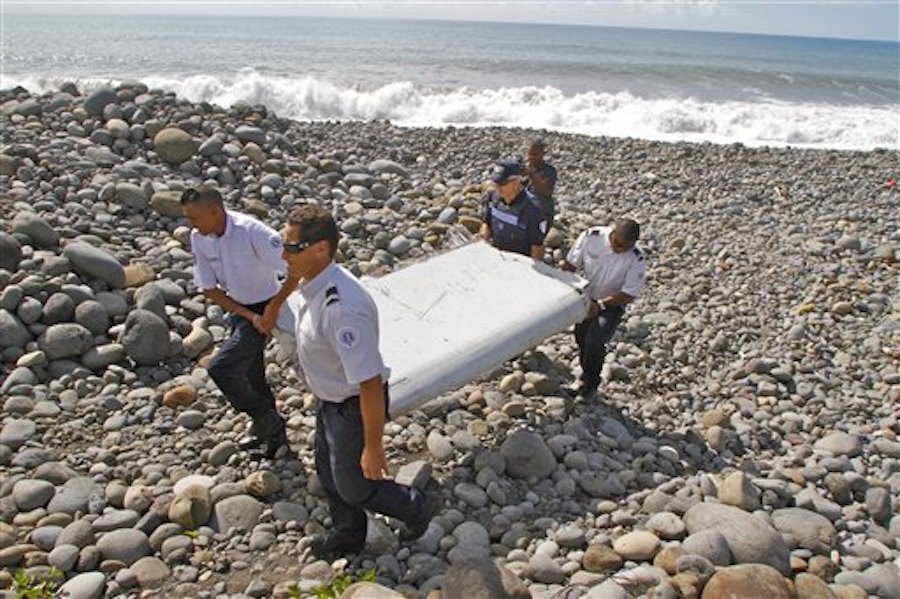Debris clues: Are they searching for MH370 in the right place?
Loading...
Nearly two weeks after a Malaysian Airlines flight vanished on its way from Kuala Lumpur to Beijing with 239 passengers on board in March 2014, researchers confirmed it had plunged into the Indian Ocean.
As the search continued a year later, Air Marshal Mark Binskin, Australia's deputy defense chief, told reporters, "We're not searching for a needle in a haystack. We're still trying to define where the haystack is."
Thursday, that haystack may have been found.
A large chunk of plane debris was discovered washed up on Reunion Island off the east coast of Madagascar this week. The plane part has been sent to a French facility, where authorities will try to determine whether it came from Malaysian Airlines Flight MH370, Reuters reports.
Vast, rotating currents along the southern Indian Ocean could have deposited wreckage from the missing flight near Africa, thousands of kilometers from where it is thought to have crashed, oceanographers said Thursday.
Aziz Kaprawi, Malaysia's deputy transport minister, told the Associated Press he was "almost certain" that the debris came from a Boeing 777, and that confirmation could come in "less than two days.”
If the wreckage is in fact part of the Boeing 777, experts will try to retrace its path to locate where the debris could have drifted from. Yet they said it’s unlikely that the one piece could help identify the plane’s final resting place within the massive swath of ocean off Australia, where the search has been focused for months, Reuters reports.
"This wreckage has been in the water, if it is MH370, for well over a year so it could have moved so far that its not going to be that helpful in pinpointing precisely where the aircraft is," Australian Deputy Prime Minister Warren Truss told reporters.
Still, the location of the debris suggests researchers had been looking “in the right place,” Mr. Truss adds.
Australia’s been leading the search after investigators analyzed a number of satellite ‘pings’ from the aircraft and concluded it crashed in the southern Indian Ocean about 2,000 km southwest of Perth, Reuters reports.
It’s very likely that their search area is where the debris would end up, says Dr. Alan Blumberg of the Stevens Institute of Technology, who specializes in oceanography, predictive modeling and ocean physics.
Dr. Blumberg is currently studying currents off the South Atlantic Ocean with the University of Sao Paolo, which he says are within the same latitude and similar to that of the Indian Ocean.
“There’s strong possibility that the currents off the coast of Australia could take debris to Madagascar, absolutely,” he says.
Blumberg says he’s hopeful the plane’s resting place could now be located, but other experts warn that retracing the debris' drift through sea-current models could lead investigators astray.
“Using surface currents to backtrack [approximately] 4,000 km will probably not narrow down the original location of the crash significantly,” senior physical oceanography scientist Randy Patton wrote in an email. “Smaller scale motions and variable current speeds would introduce a lot of uncertainty in the debris' actual trajectory.”
Only four serious accidents in the past 20 years involved Boeing 777s. Flight MH370 is the only one thought to have crashed south of the equator, says an earlier Reuters report.
"Our [ocean current] model results that we did last year predicted that within 18-24 months after the crash, it was a possibility that it would have ended up within that region," said Charitha Pattiaratchi, professor of coastal oceanography at the University of Western Australia.
While Pattiaratchi's work suggests debris could also drift as far east as Tasmania, the latest finding has been seen as ‘major lead’ in the ongoing search for the missing flight.







